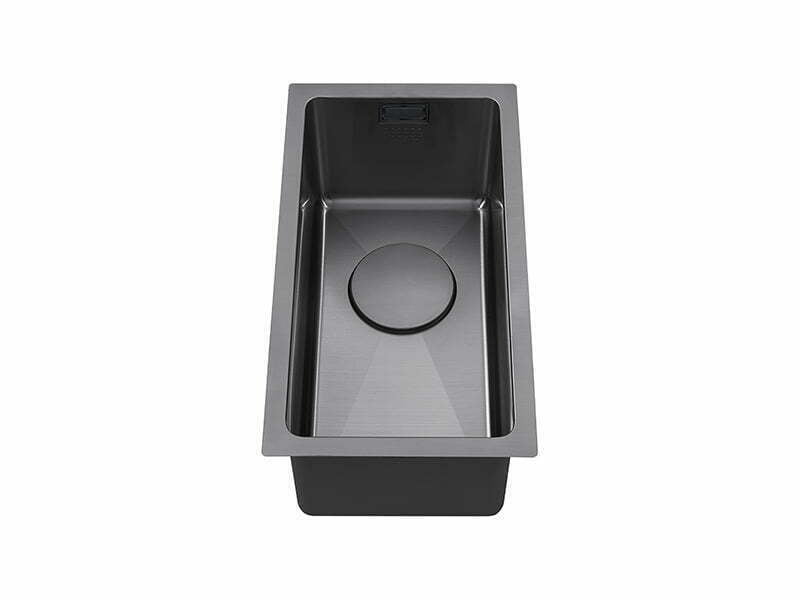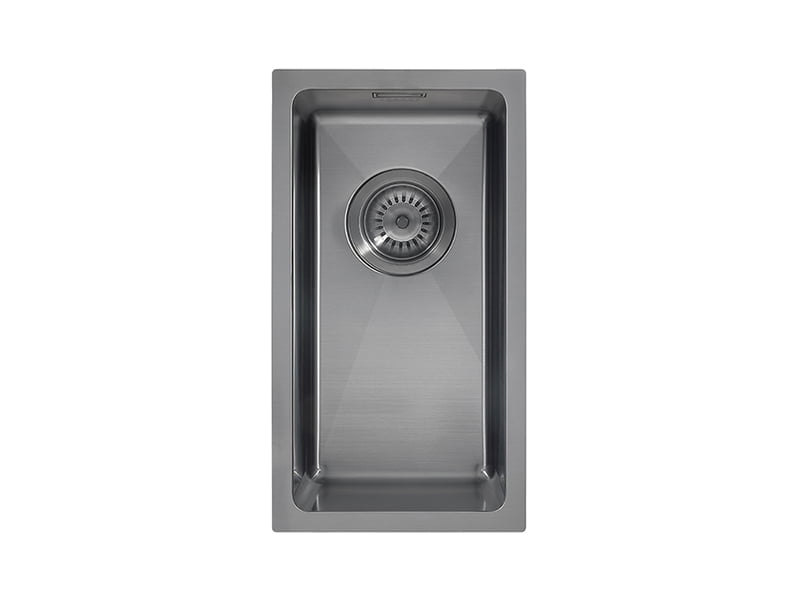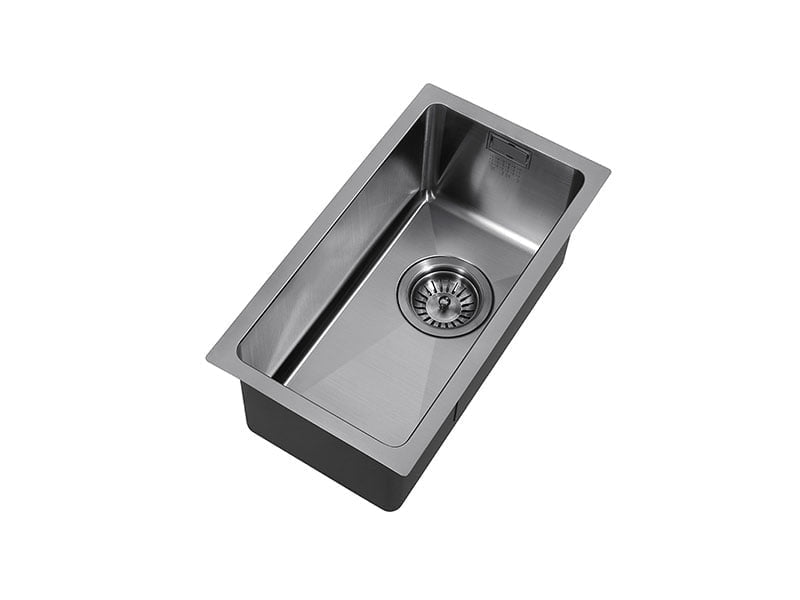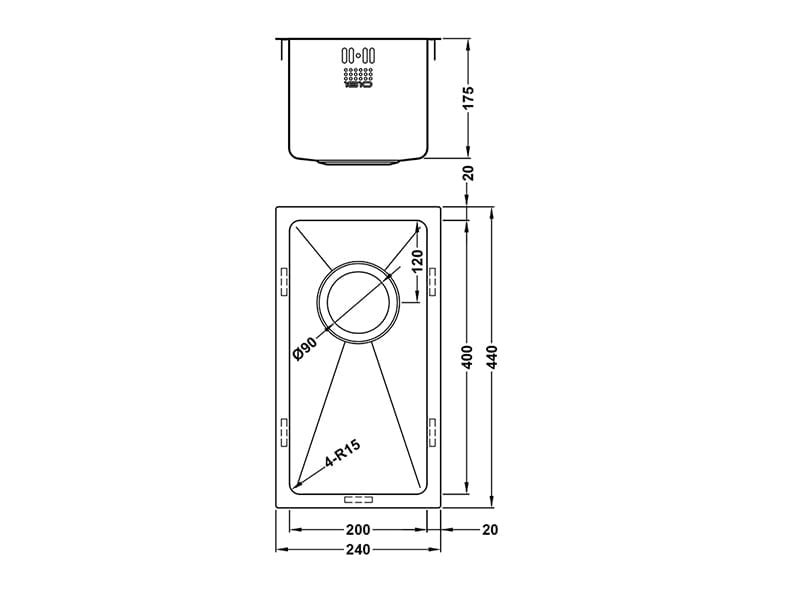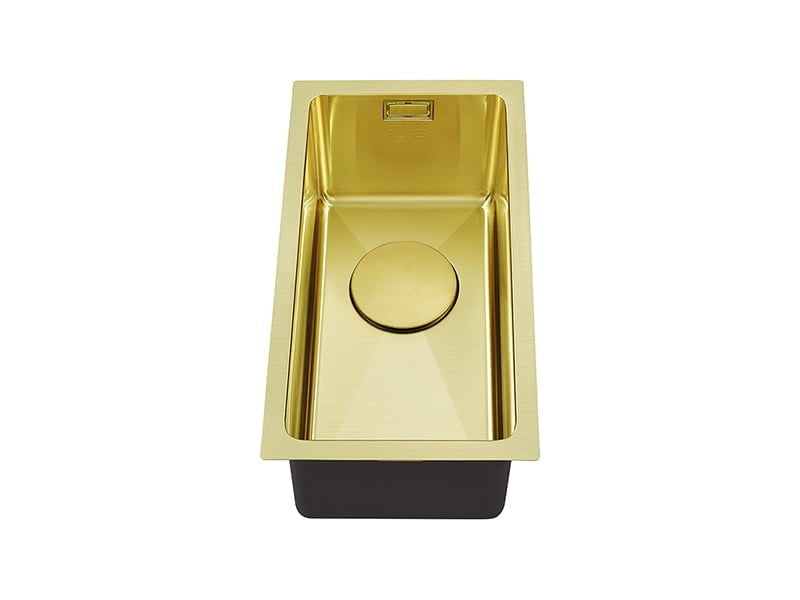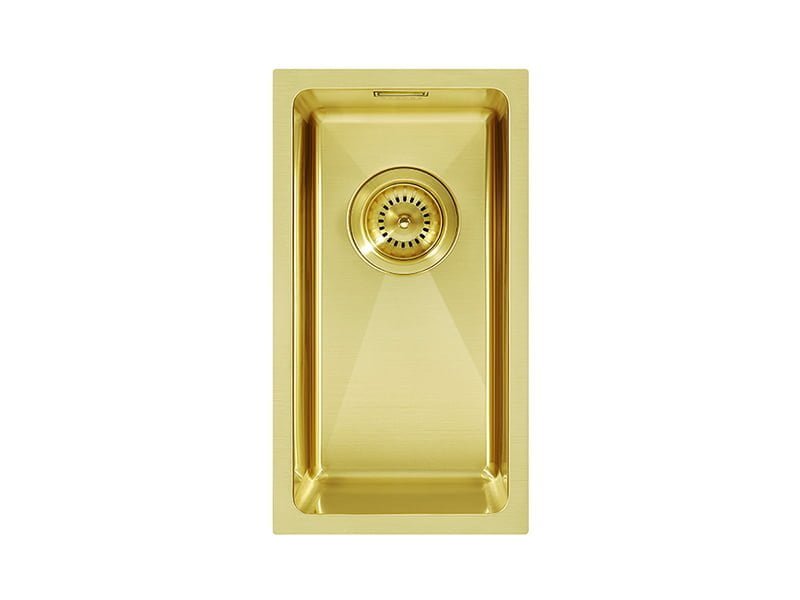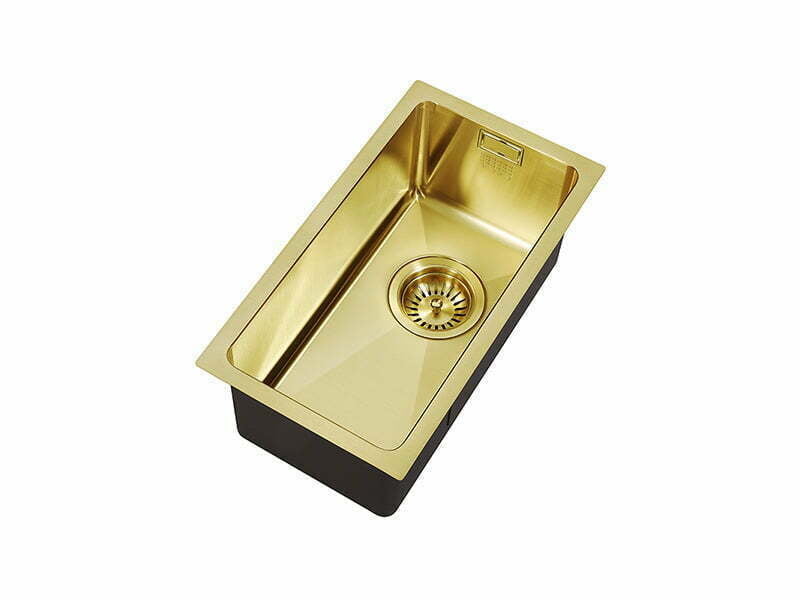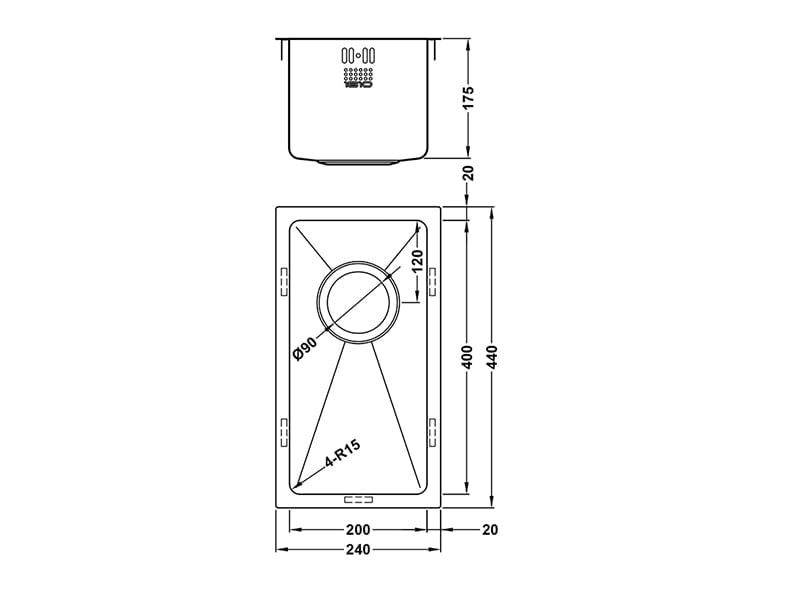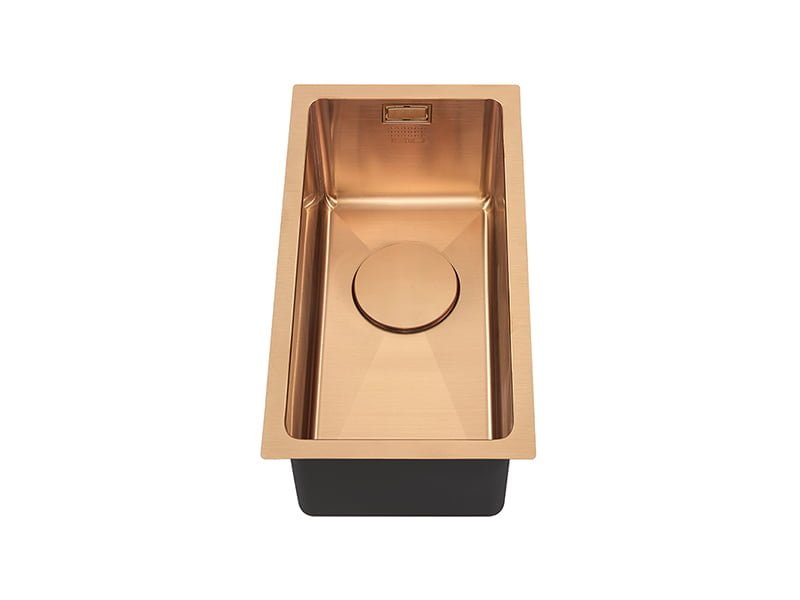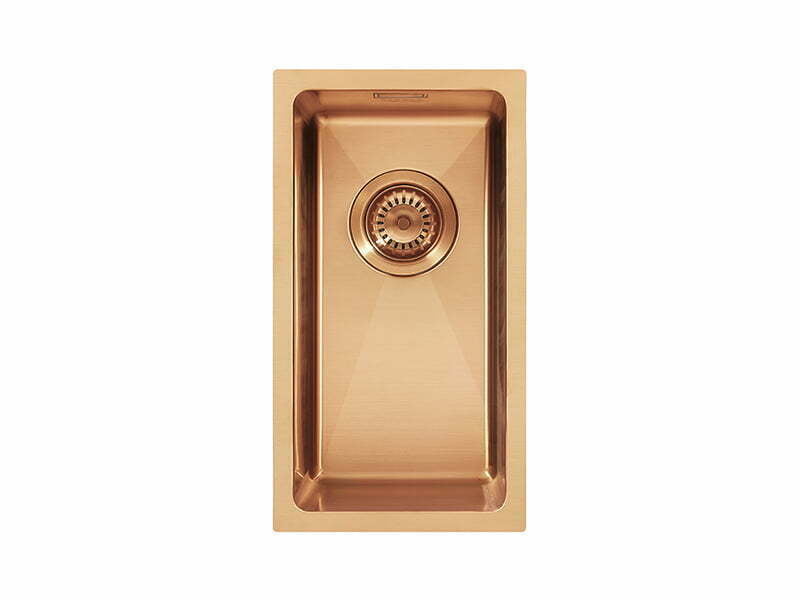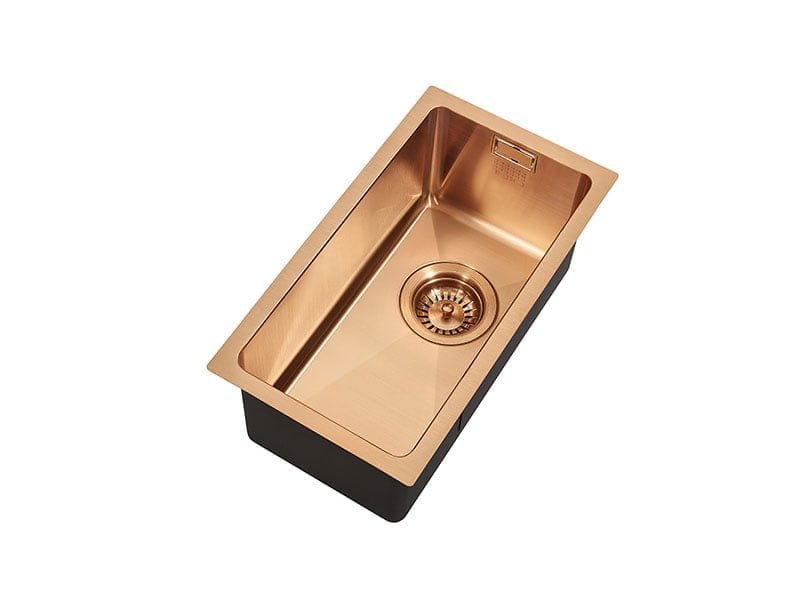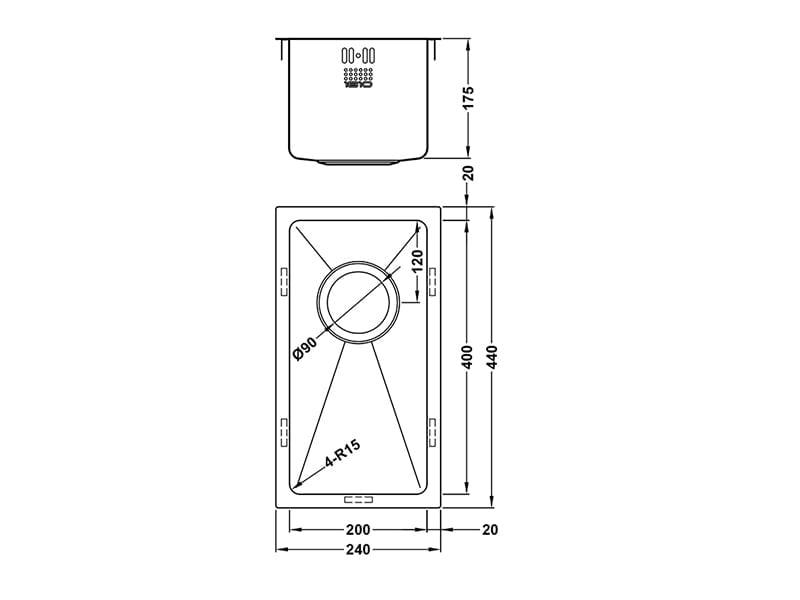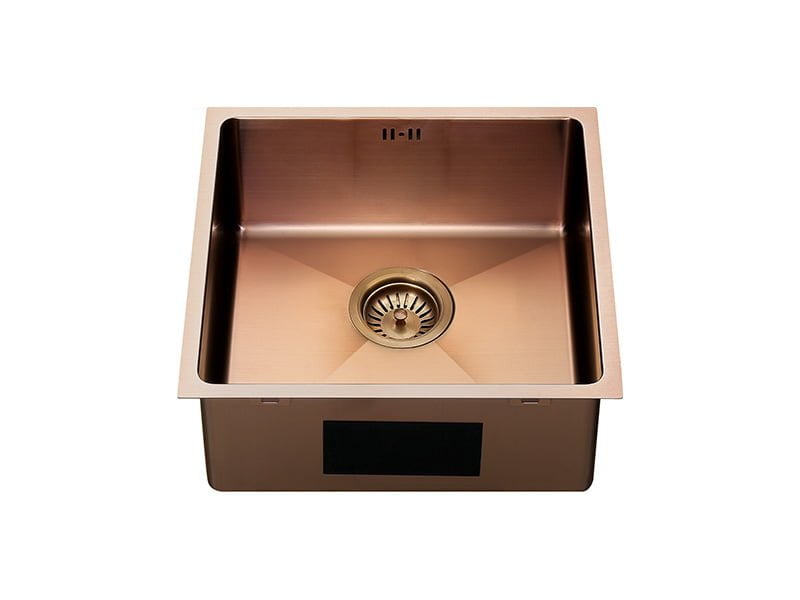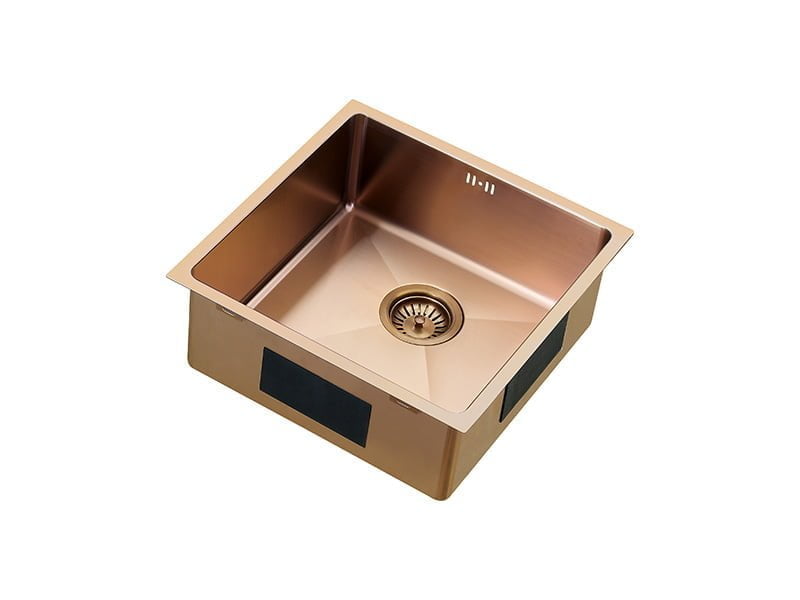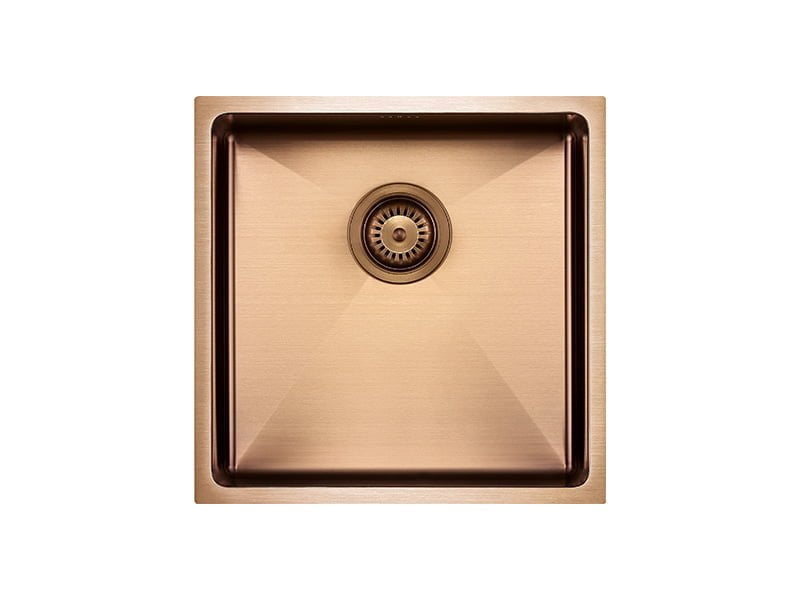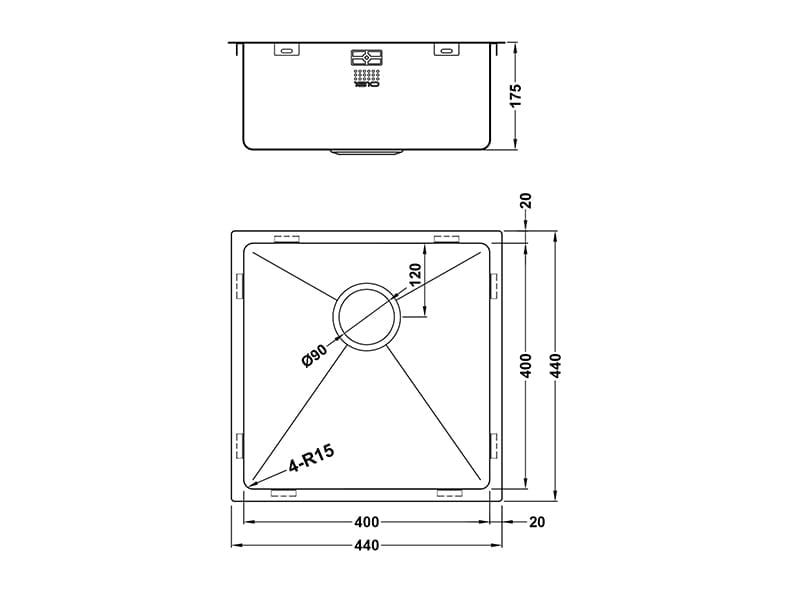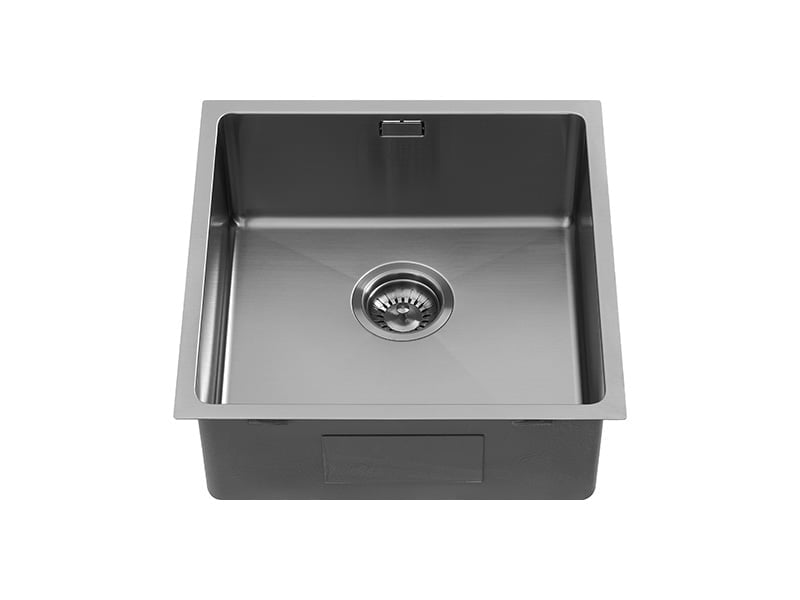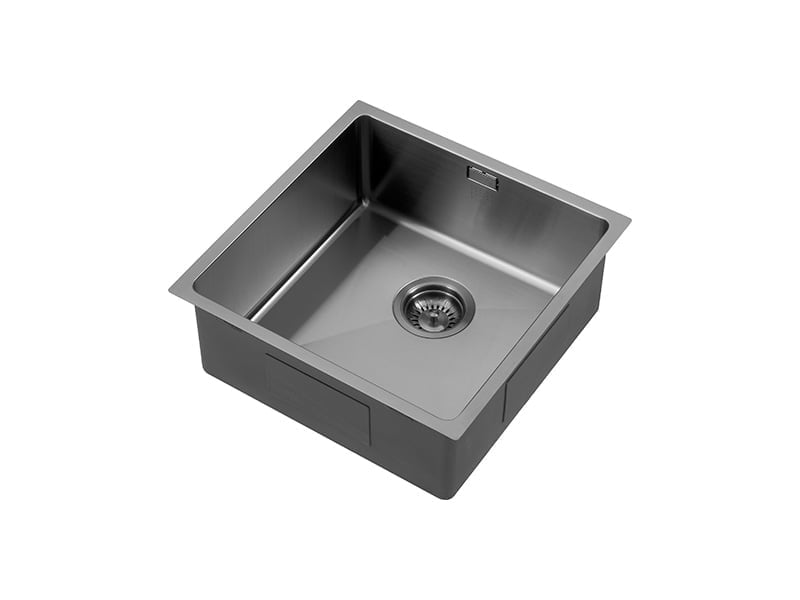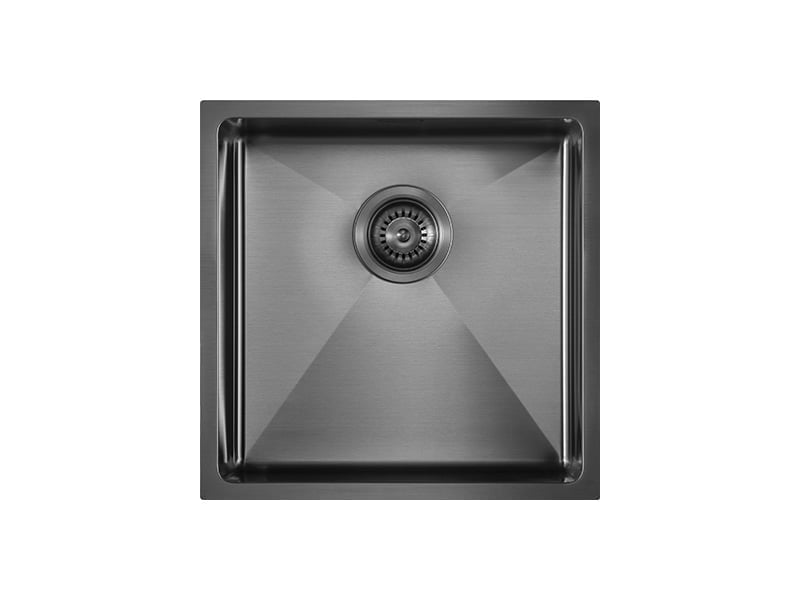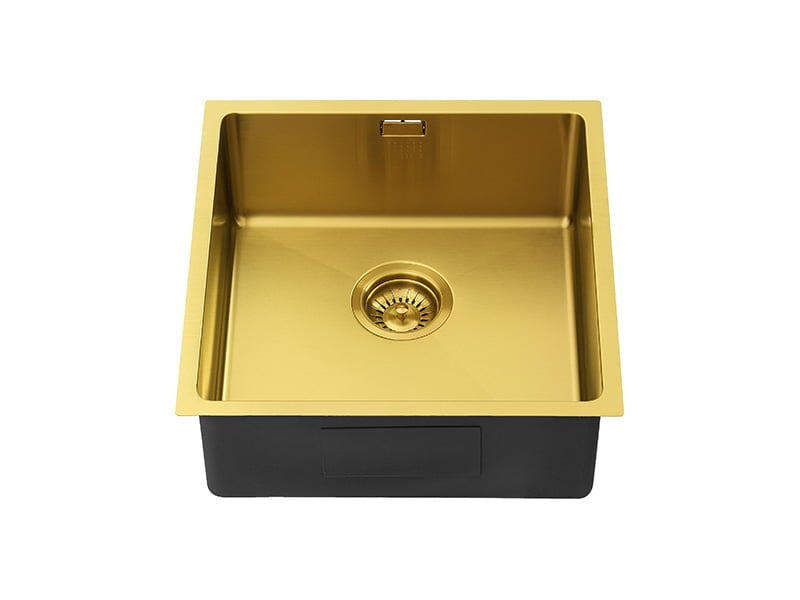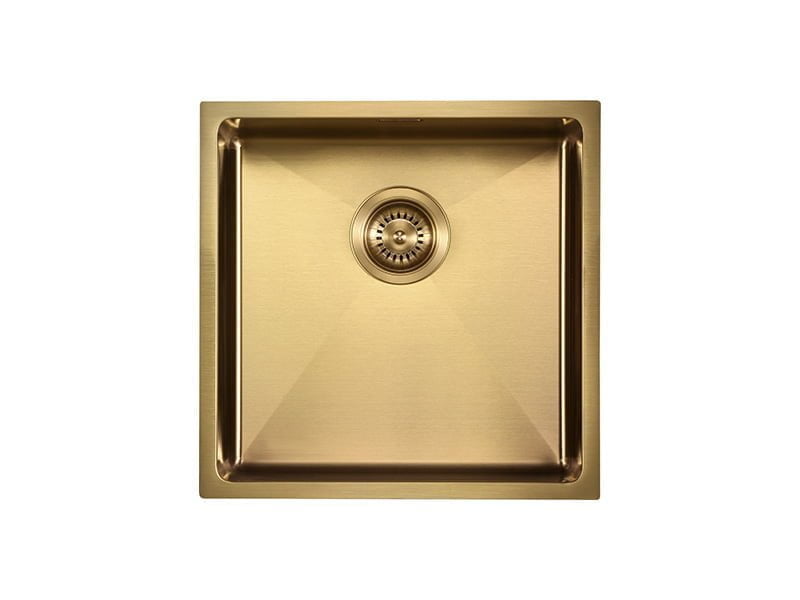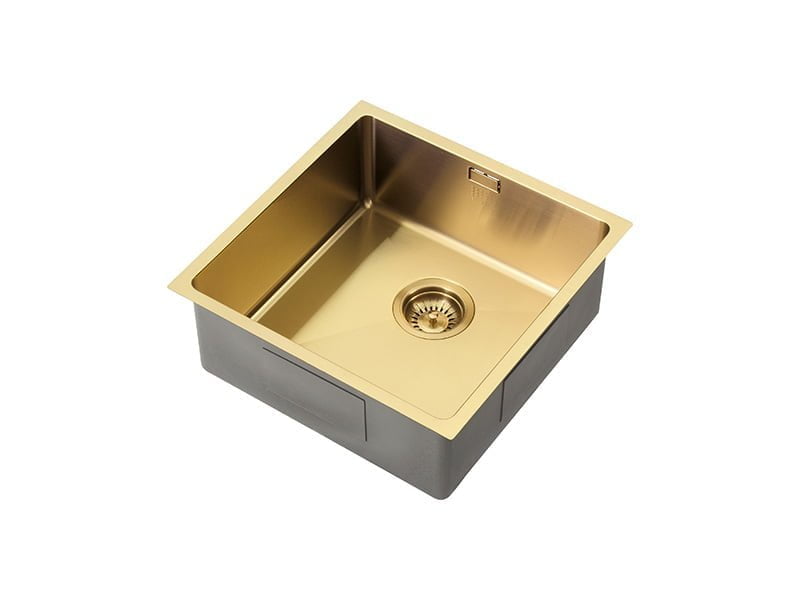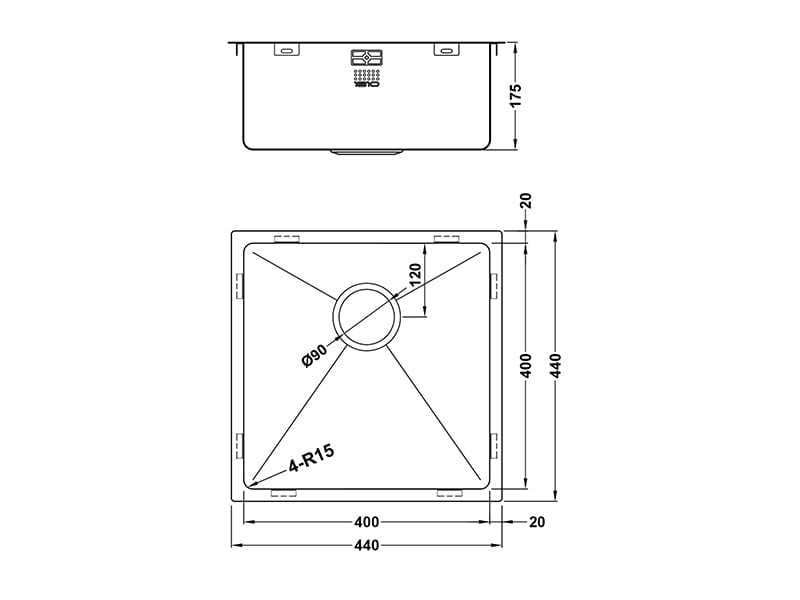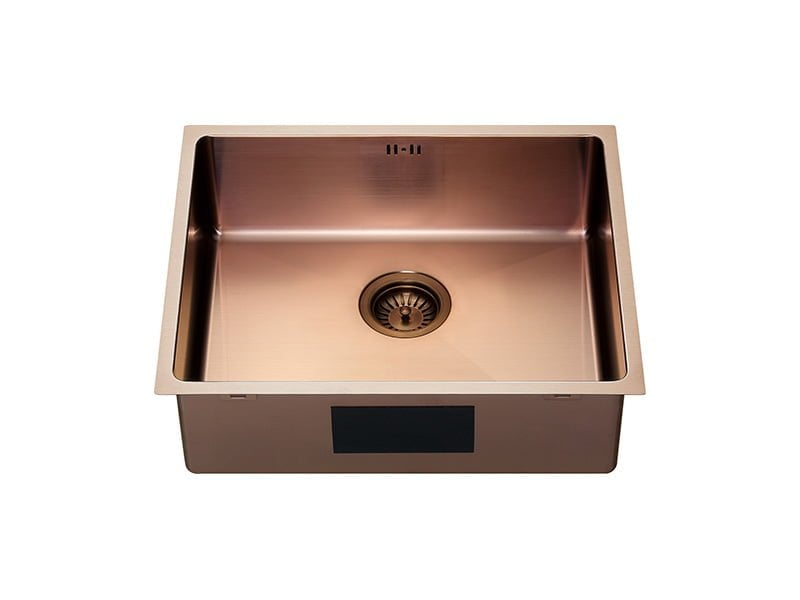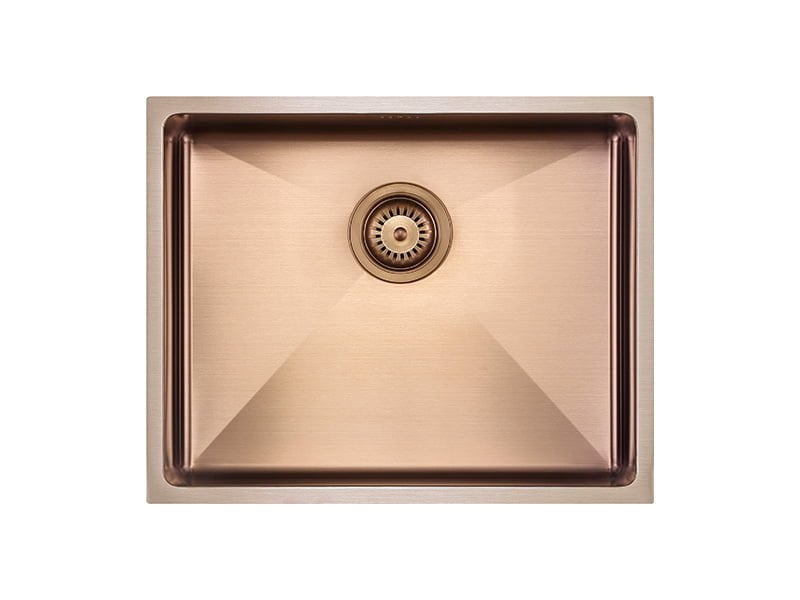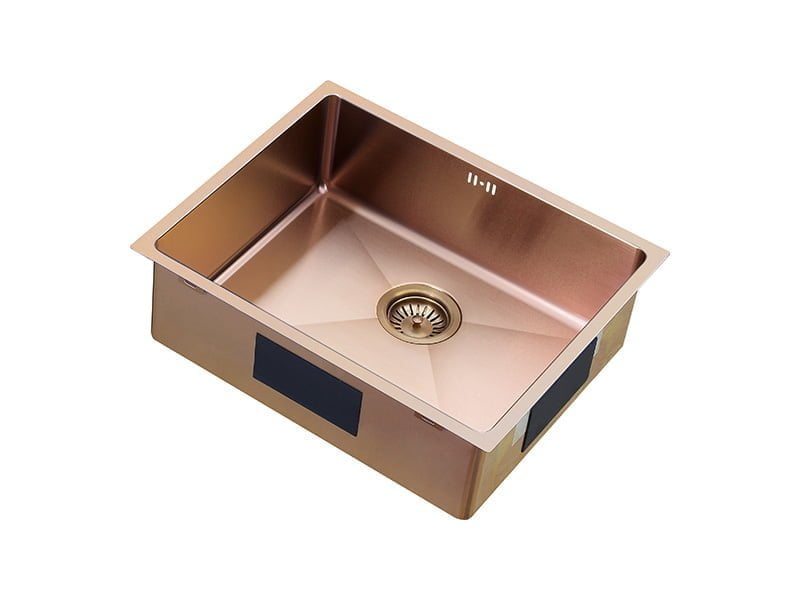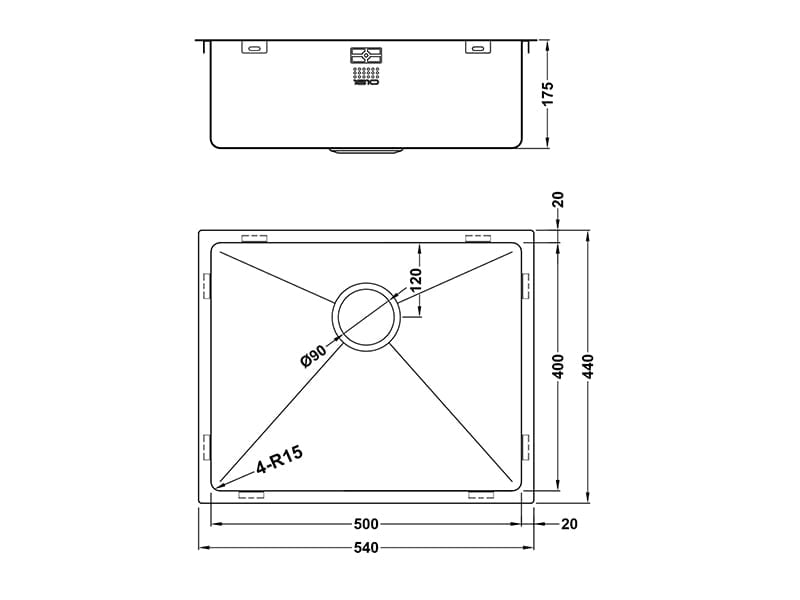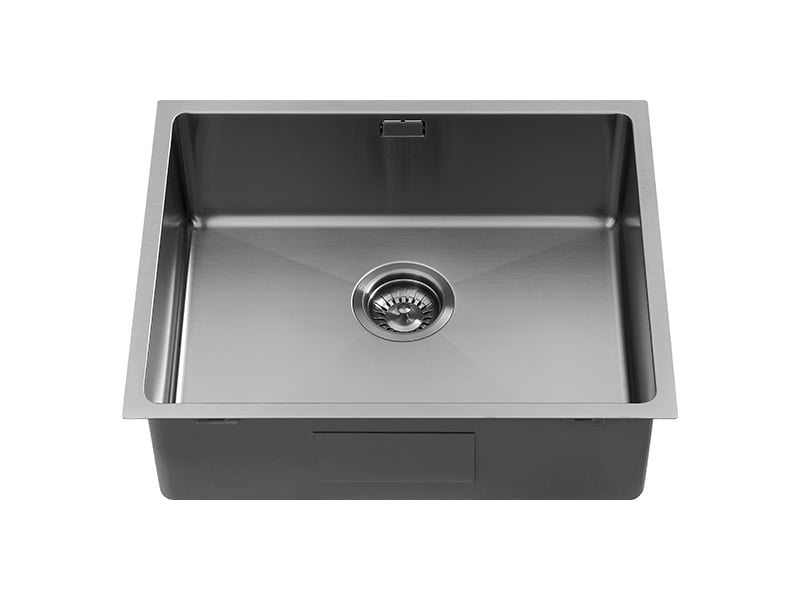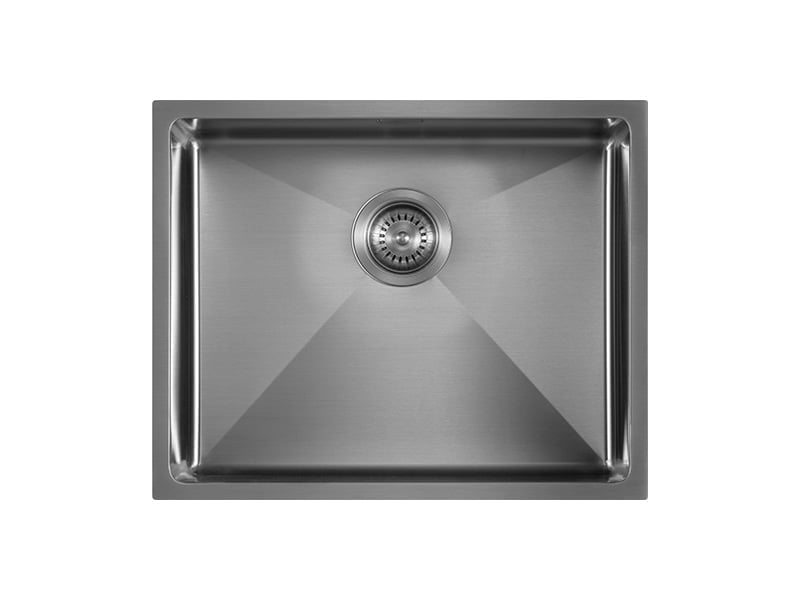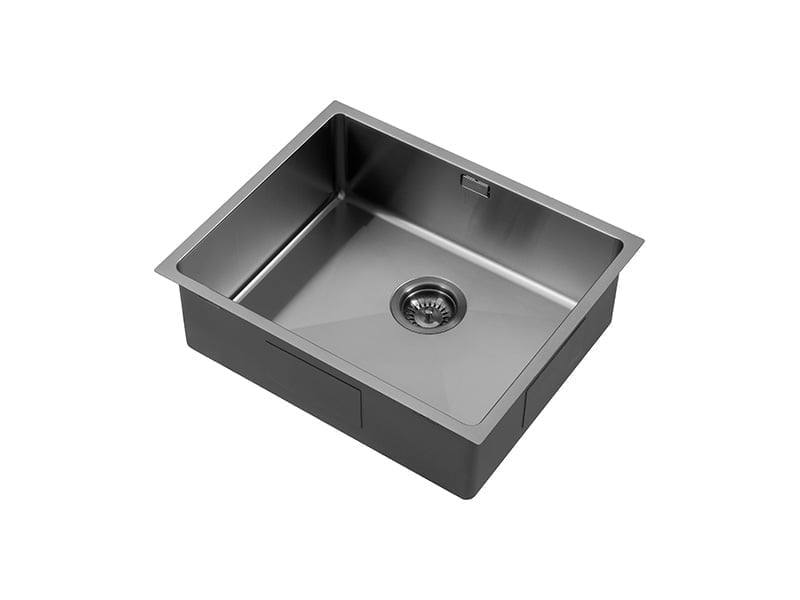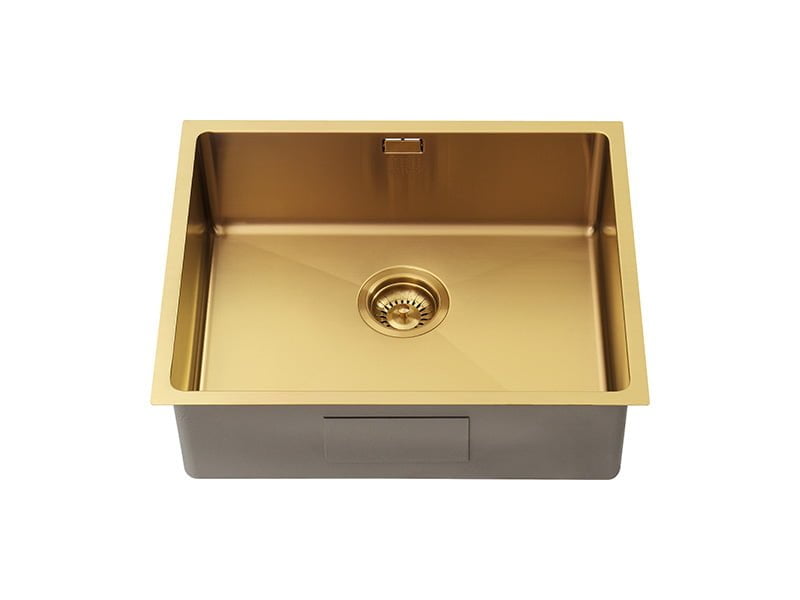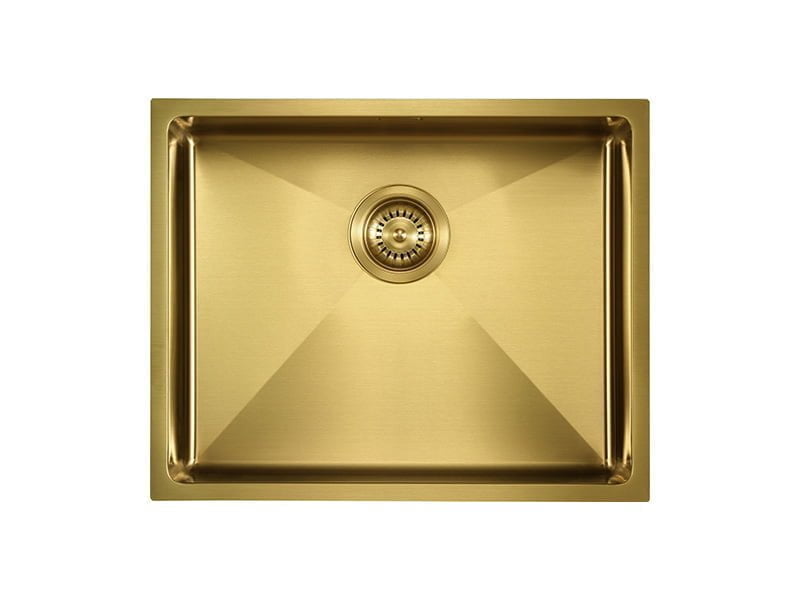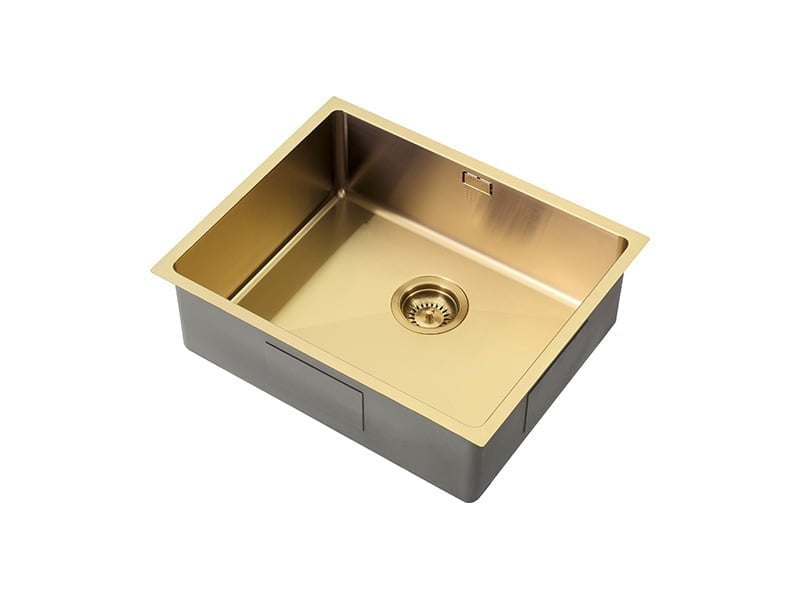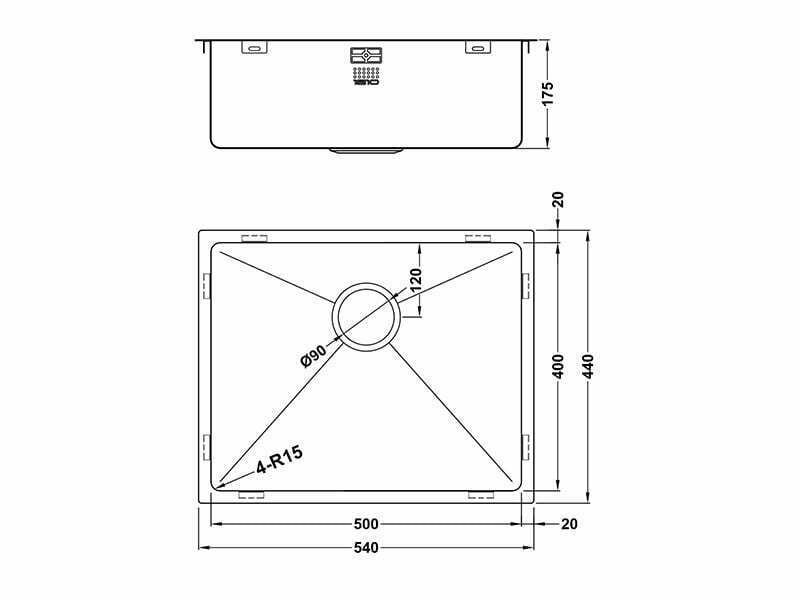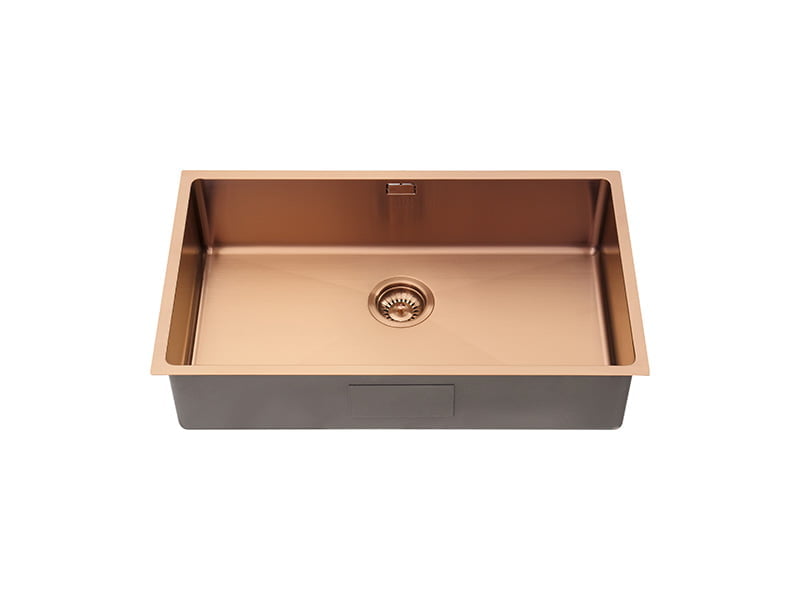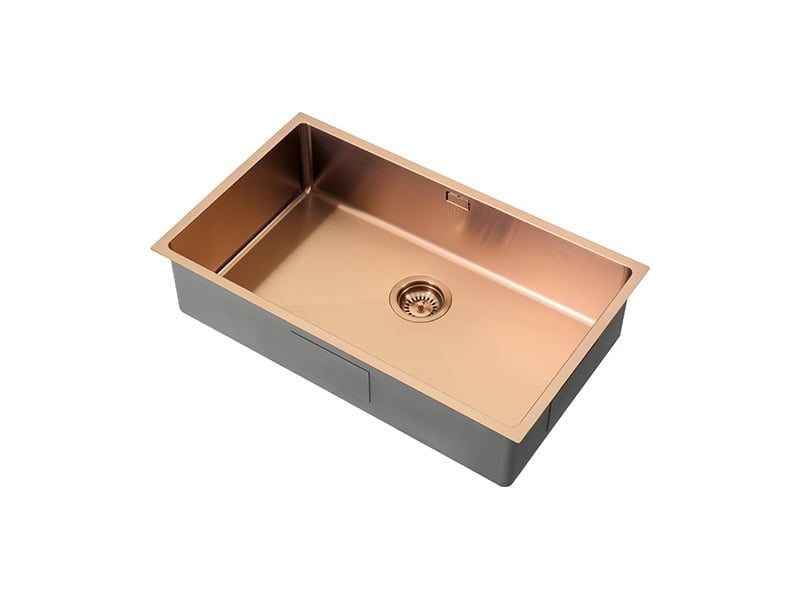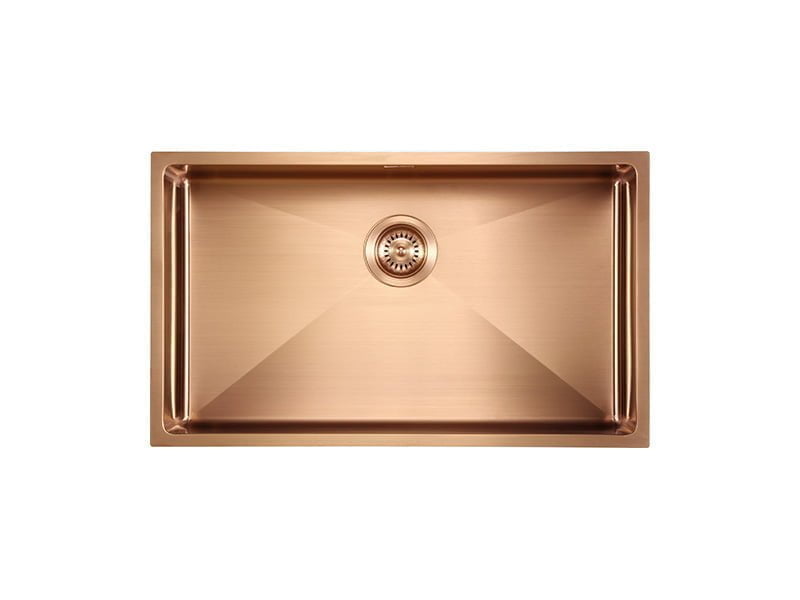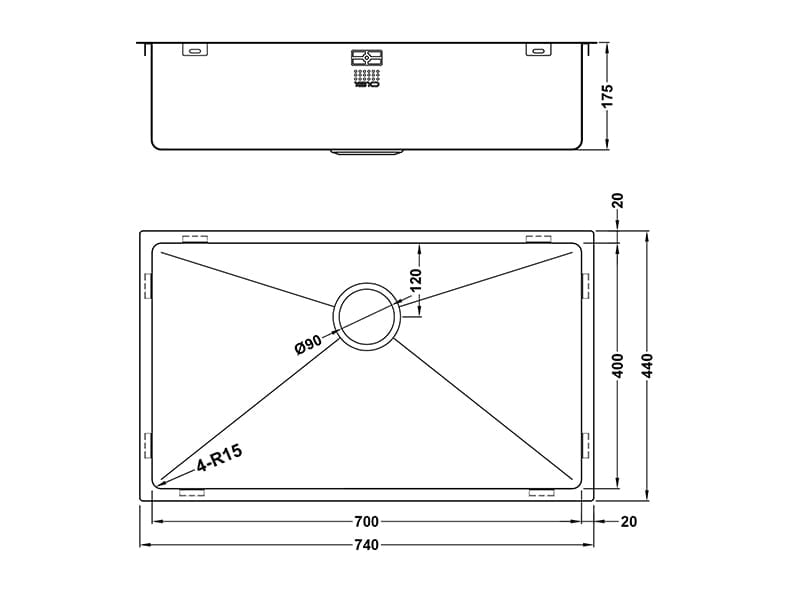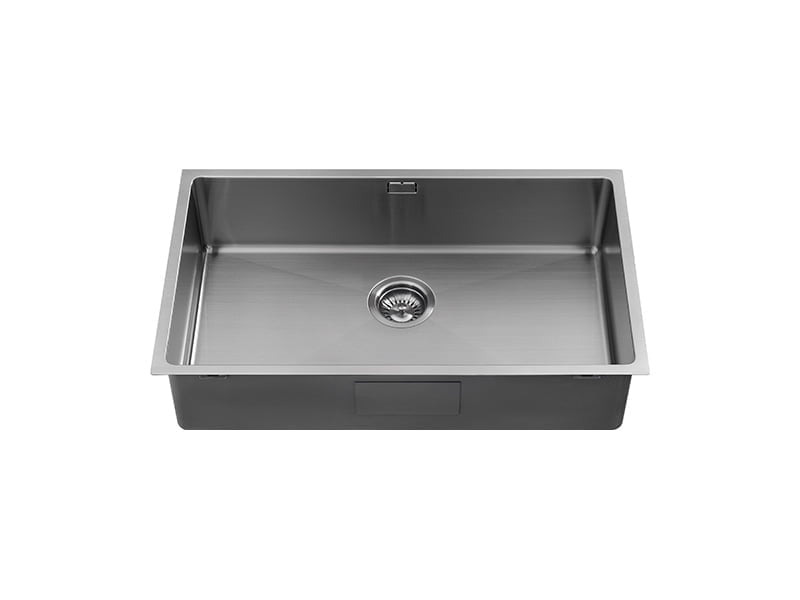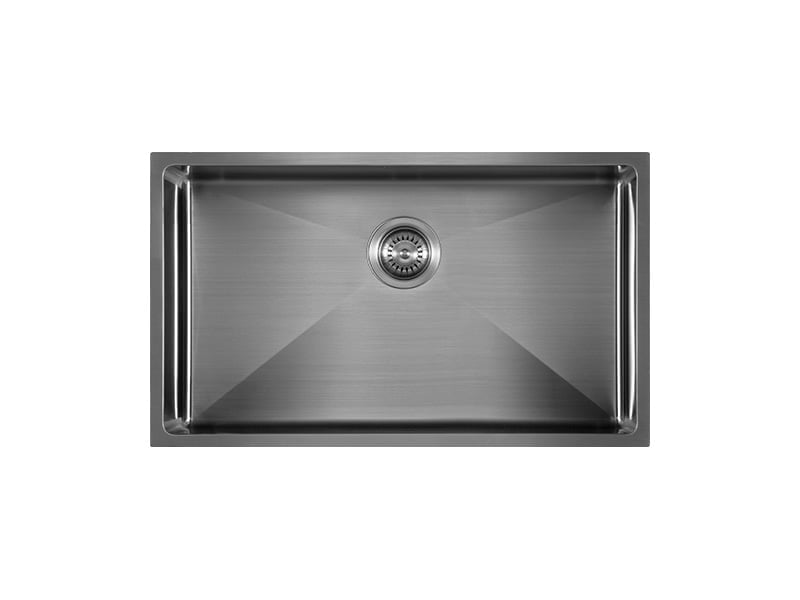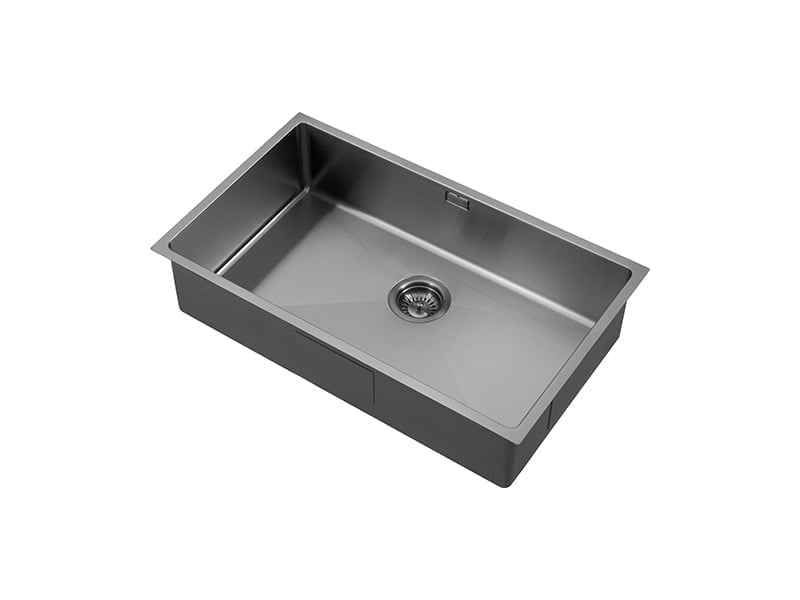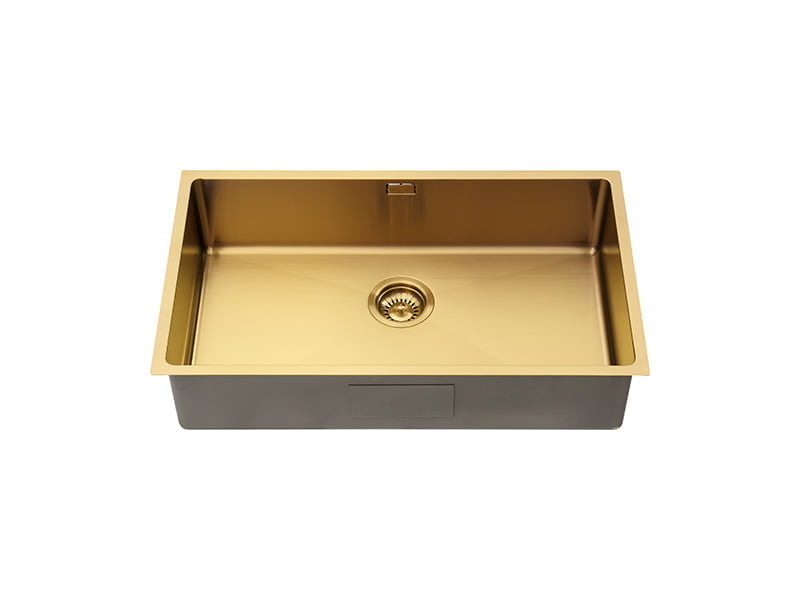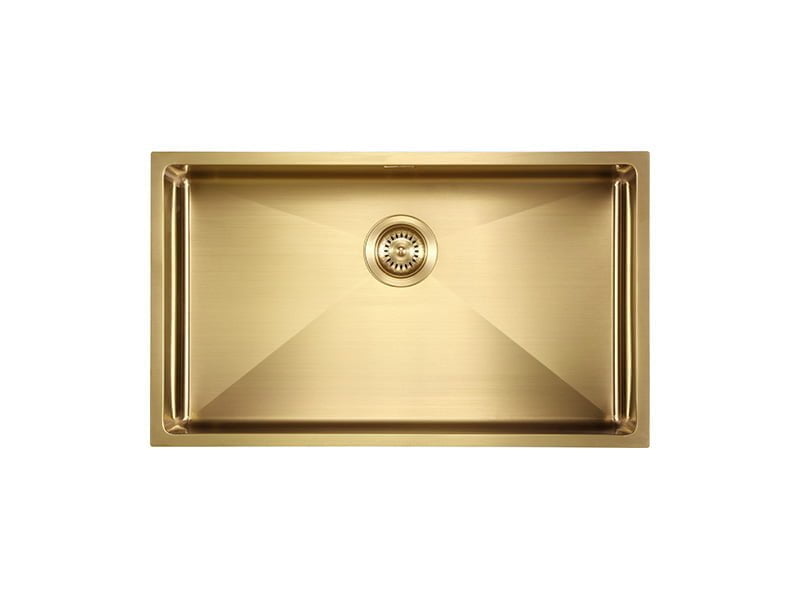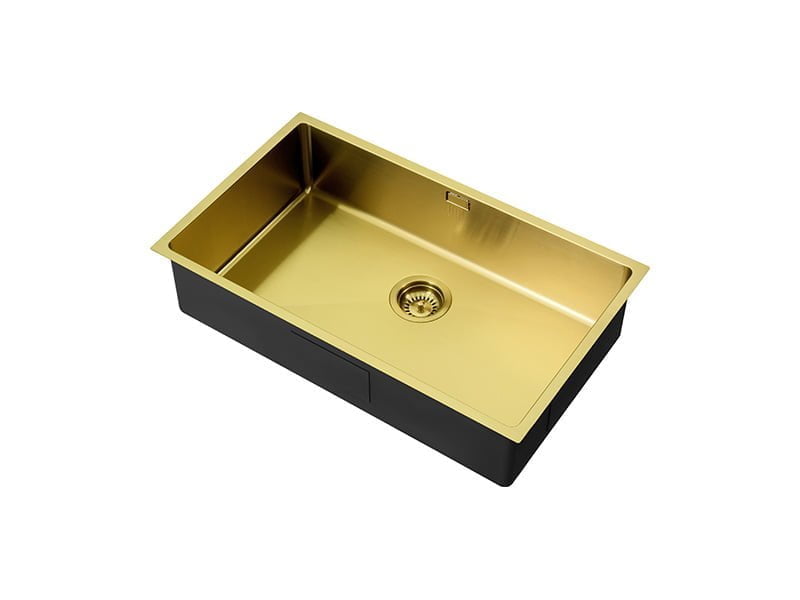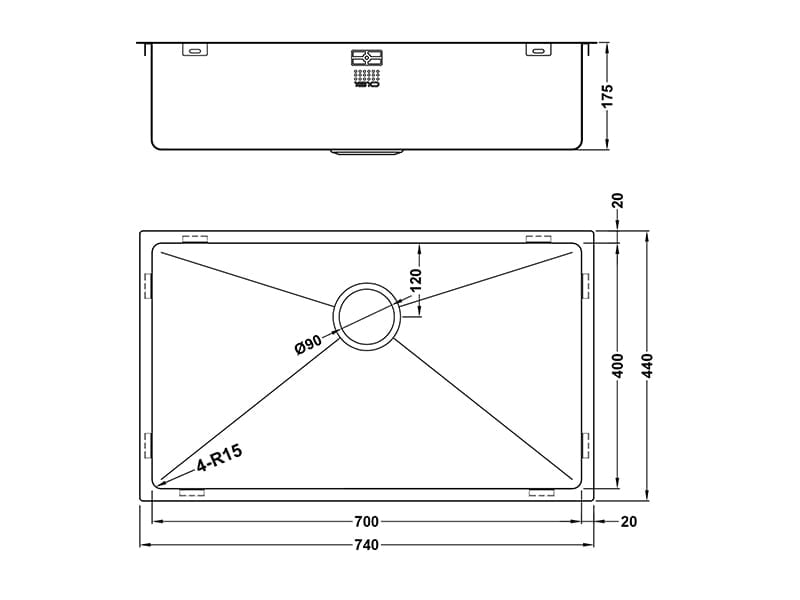The popularity of undermount sinks has surged in recent years due to their aesthetically pleasing appearance and practical advantages over traditional top-mount sinks.
An undermount sink is installed below the countertop surface, resulting in a seamless transition between the counter and the sink basin.
This not only gives your kitchen an upscale look but also offers better functionality by allowing you to easily sweep crumbs and spills directly into the sink without encountering any raised edges or rims.
Undermount sinks are designed for use with solid countertop materials such as granite, quartz, or solid surface composites.
Sink Types | Benefits | Installation | FAQ’s
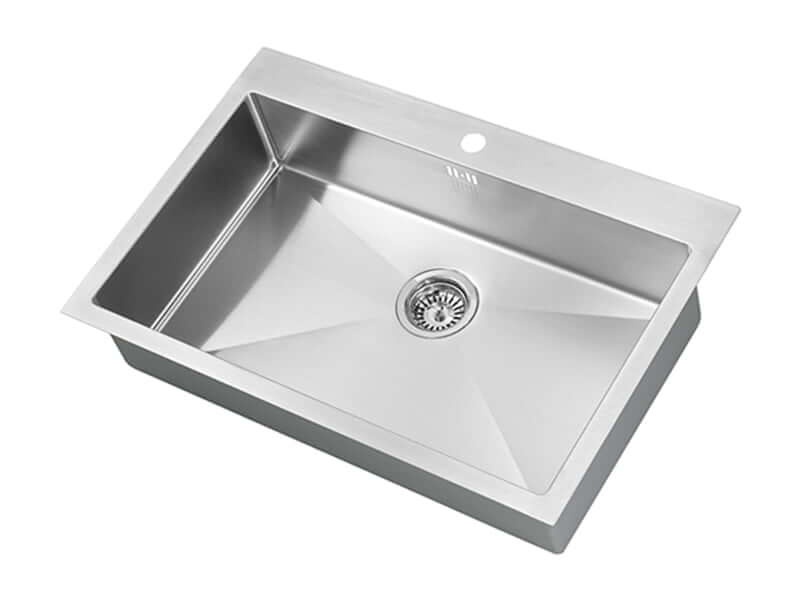
Types of Undermount Sinks
An undermount sink is a popular choice for many contemporary kitchens.
Known for its sleek design and clean lines, it can easily transform the look of your kitchen space.
One important factor to consider when shopping for an undermount sink is the material from which it’s made. In this section, we will explore four common types of undermount sink materials: stainless steel, granite composite, cast iron, and fireclay.
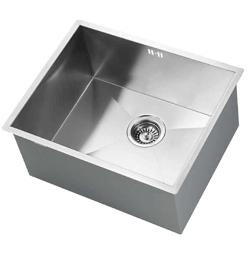
Stainless Steel
Stainless steel sinks are the most popular among homeowners who opt for undermount installations. Some reasons for their popularity include:
Durability: Stainless steel sinks are tough and resistant to dents, scratches, and stains.
Longevity: A high-quality stainless steel sink can last up to 15 years or more with proper maintenance.
Affordability: These sinks come in a wide range of prices, suiting various budgets.
Versatility: Available in different gauges (thickness), sizes, shapes, and finishes to complement any kitchen décor.
Hygiene: The non-porous surface inhibits bacterial growth and makes it easy to keep the sink sanitised.
Some potential drawbacks of choosing a stainless steel undermount sink are noise during use (can be mitigated by selecting one with sound-dampening pads) and visible water spots in hard water areas.
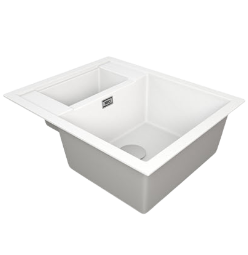
Granite Composite
Granite composite undermount sinks have gained traction due to their aesthetic appeal as well as functional properties. Featuring a mixture of granite or quartz aggregates combined with acrylic resins, these sinks offer several benefits:
Beauty: Mimics the appearance of natural stone surfaces resulting in an elegant addition to your kitchen.
Low Maintenance: Simple cleaning routine required considering its hardy construction makes it resistant to chipping and cracks.
Resilience: Naturally absorbs shocks from pots or pans dropped into the basin without leaving marks behind.
Heat Resistance: Withstands heat up to 536°F, ensuring hot pots won’t cause damage.
However, some cons of granite composite undermount sinks include a higher price tag when compared to stainless steel options and potential wear-and-tear over time in lighter-coloured models vulnerable to stains from dark liquids such as red wine or coffee.
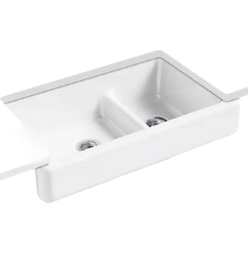
Cast Iron
With its timeless appeal and long-standing reputation for quality, cast iron remains another favourite material for undermount sinks. Known for their sturdiness as well as beauty, they boast several advantages:
Heft: The substantial weight of a cast iron sink can instill confidence since it’s less prone to breaking or chipping.
Enamel Coating: A glossy porcelain enamel finish available in a variety of colours not only protects the surface but adds visual charm to your kitchen.
Sound Absorption: Reduces noise generated during use due to its solid construction.
On the flip side, cast iron sinks are typically more expensive than other types, heavier (requiring additional support), and susceptible to scratching or chipping if sharp objects come into contact with the enamel layer.
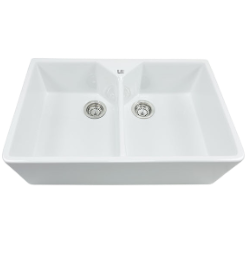
Fireclay
Lastly, fireclay is another material that you might consider when selecting the perfect undermount sink. Handcrafted from specially formulated clay fired at extremely high temperatures (2000°F), fireclay sinks possess unique characteristics:
Heat Resistance: Capable of handling high temperatures without cracking makes them suitable for heavy-duty cooking tasks.
Chip & Scratch-Resistance: Unlike other materials like stainless steel or cast iron with porcelain finishes, fireclay has inherent resistance properties.
Filter
Sink Size
Sink Type
Bowl Configuration
Finish
- 300 (mm)
- Undermount
- 1 Bowl
- Gunmetal
-
£620.00Original price was: £620.00.£451.00Current price is: £451.00.
- 300 (mm)
- Undermount
- 1 Bowl
- Gold Brass
-
£620.00Original price was: £620.00.£451.00Current price is: £451.00.
- 300 (mm)
- Undermount
- 1 Bowl
- Copper
-
£620.00Original price was: £620.00.£451.00Current price is: £451.00.
- 450 (mm)
- Undermount
- 1 Bowl
- Copper
-
£717.50Original price was: £717.50.£522.00Current price is: £522.00.
- 450 (mm)
- Undermount
- 1 Bowl
- Gunmetal
-
£717.50Original price was: £717.50.£522.00Current price is: £522.00.
- 450 (mm)
- Undermount
- 1 Bowl
- Gold Brass
-
£717.50Original price was: £717.50.£522.00Current price is: £522.00.
- 600 (mm)
- Undermount
- 1 Bowl
- Copper
-
£815.00Original price was: £815.00.£593.00Current price is: £593.00.
- 600 (mm)
- Undermount
- 1 Bowl
- Gunmetal
-
£815.00Original price was: £815.00.£593.00Current price is: £593.00.
- 600 (mm)
- Undermount
- 1 Bowl
- Gold Brass
-
£815.00Original price was: £815.00.£593.00Current price is: £593.00.
- 800 (mm)
- Undermount
- 1 Bowl
- Copper
-
£894.00Original price was: £894.00.£651.00Current price is: £651.00.
- 800 (mm)
- Undermount
- 1 Bowl
- Gunmetal
-
£894.00Original price was: £894.00.£651.00Current price is: £651.00.
- 800 (mm)
- Undermount
- 1 Bowl
- Gold Brass
-
£894.00Original price was: £894.00.£651.00Current price is: £651.00.
Benefits of Undermount Sinks
Undermount sinks offer several advantages to homeowners, from easy cleaning and durability to versatile design options that complement a wide range of kitchen styles. Incorporating an undermount sink into your kitchen design can not only improve the functionality but also add a touch of elegance and refinement.
Easy to Clean
One of the most appealing aspects of undermount sinks is their ease of cleaning. Since they are installed under the countertop, there is no rim above the counter surface that can collect dirt, crumbs, or debris.
This seamless integration between the sink and countertop allows you to easily wipe any mess directly into the sink basin without worrying about it getting caught in crevices.
Here are a few key reasons why undermount sinks promote better cleanliness:
- No lip or rim for food particles and grime build-up
- Seamless appearance results in fewer places for bacteria to hide
- Easier access to clean hard-to-reach areas around faucets and fixtures
Durable and Long Lasting
Undermount sinks are known for their durability, which can be attributed to both their secure installation method as well as their sturdy materials.
When properly installed, these sinks provide robust support by being firmly anchored beneath your countertop.
The weight distribution on this type of installation alleviates stress on vulnerable corners and edges, leading to increased longevity.
Material selection also plays a significant role in determining the lifespan of an undermount sink:
- Stainless steel: Corrosion-resistant withstanding heavy usage; long-lasting when appropriately maintained.
- Granite composite: Highly resistant to scratches, stains, heat, impact; low maintenance.
- Cast iron: Durable due to enamel coating though may chip over time; offers classic aesthetic appeal.
- Fireclay: Resistant to scratches, staining, chipping; offers traditional look with added sophistication.
Versatile Design Options
Another attractive feature of undermount sinks is the plethora of design choices available to suit your specific kitchen style or requirements.
Without a rim interrupting the countertop’s flow, your choice of counter material remains uninterrupted and on full display, making these sinks an ideal option for luxurious materials such as granite or quartz.
Here are some design possibilities offered by undermount sinks:
- Single bowl: Suited for smaller kitchens as it allows for more counter space.
- Double bowl: Ideal for larger kitchens and multitasking; allows separation of tasks.
- Rounded corners: Easy cleaning, sleek appearance, modern design.
- Sharp square corners: Bold appearance, suits contemporary or industrial designs.
In short, due to their durability, ease of cleaning, and versatile design options, undermount sinks make a great addition to any kitchen remodelling project.
By selecting the right material and configuration for your needs, you’ll enjoy an elegant yet functional focal point in your kitchen for years to come.
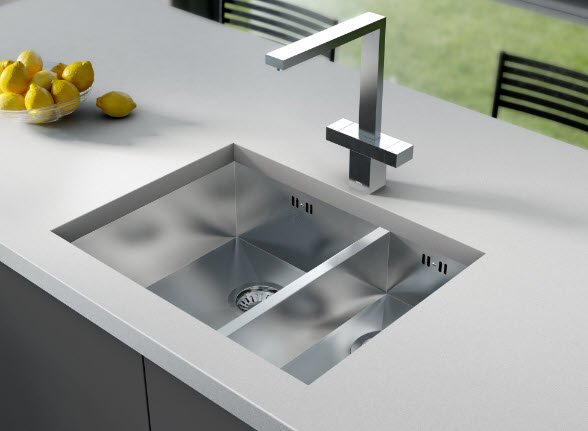
Installation Considerations for Undermount Sinks
When planning to install an undermount sink, there are several important factors to consider. In this section, we will delve into the different aspects of installation, including countertop material compatibility, cabinet support requirements, and proper sealing and caulking techniques.
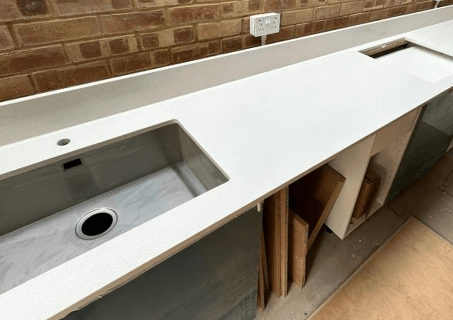
Countertop Material Compatibility
Undermount sinks are compatible with various countertop materials but not all. They work best with solid surface countertops such as:
- Granite
- Quartz
- Marble
- Solid Surface
Being securely fastened underneath the countertop ensures a seamless transition between the sink and the counter surface.
However, undermount sinks are not suitable for laminate or tiled countertops as these surfaces do not provide enough support for the sink’s weight and cannot be properly sealed against water intrusion.
When selecting a countertop material for your undermount sink kitchen project, make sure to consult with professionals regarding compatibility and proper installation methods to ensure a long-lasting result.
Cabinet Support Requirements
Installing an undermount sink requires adequate cabinet support due to their weight-bearing nature compared to top mount/drop-in sinks.
The cabinet must be strong enough to hold the weight of the sink itself along with any additional force exerted when filled or used for heavy-duty tasks.
Most cabinets can handle the weight of stainless steel and composite sinks; however, cast iron or fireclay sinks may pose challenges because they demand sturdier cabinets and sometimes customized structures including:
- Reinforced plywood or solid wood base instead of particleboard.
- Additional bracing or supports attached specifically for heavy loads.
- An expert assessment from carpenters, architects or structural engineers if necessary.
Before you proceed with your under-counter sink kitchen installation plans, consult a professional contractor or installer who can assess your existing cabinetry design and advise on strengthening methods if required.
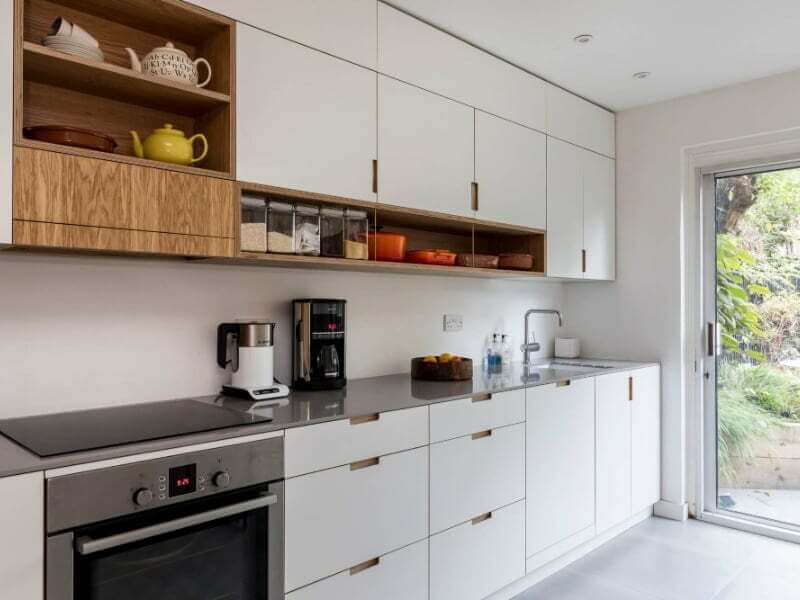
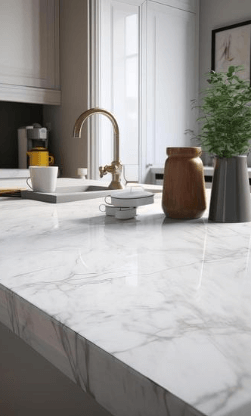
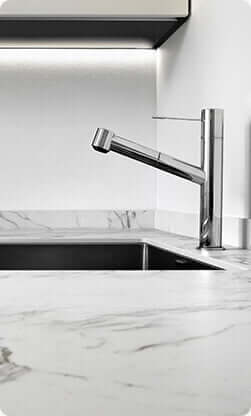
Proper Sealing and Caulking Techniques
A crucial aspect in installing an undermount sink is the proper sealing and caulking to prevent water intrusion.
Improper sealing can lead to long-term problems such as mould, mildew or countertop damage.
Follow these steps to achieve a watertight seal:
- Apply a continuous bead of high-quality, waterproof silicone adhesive along the rim of the sink.
- Attach your kitchen basin sink securely to its support brackets or clip system and press it firmly against the countertop so that the adhesive bonds well with both surfaces.
- Once installed, allow sufficient time for the silicone adhesive to cure according to the manufacturer’s instructions before using the sink—typically 24 to 48 hours.
- After curing, apply a waterproof caulk around the perimeter where your sunken kitchen sink meets the counter for added protection.
In summary, installing an undermount sink necessitates careful consideration of several factors like compatible countertop materials, cabinet support requirements, and appropriate sealing techniques.
By keeping these in mind during your project planning process, you will be better equipped to make informed decisions resulting in a successful installation and an appealing modern look for your kitchen space.
Cost of Installing an Undermount Sink
When planning to install an undermount sink, it is essential to factor in the associated costs. While these sinks may add a touch of elegance and functionality to your kitchen, the price tag for installation can vary based on several factors. In this section, let’s break down the primary cost determinants for installing an undermount sink.
The material used in constructing the sink plays a significant role in determining its cost. Stainless steel undermount sinks are known for their affordability, with prices starting from £200 On the other hand, premium materials such as fireclay or cast iron can significantly raise the cost, with some models costing upward of £600. Granite composite sinks fall into a mid-range pricing category, beginning at around £400.
When budgeting for your new undermount sink, do not forget about potential extra expenses involved, such as:
Taps – New taps maybe needed if your existing one doesn’t match or fit with your new sink
Plumber – If plumbing adjustments are required during installation (such as modifications or extensions), expect additional fees charged by plumbers.
Waste Disposal System – Some homeowners take this opportunity to install or upgrade their waste disposal system, incurring an increased cost.
In summary, installing an undermount sink can vary in price depending on the material and scope of labour involved.
To create a comprehensive budget for your renovation, consider all ancillary expenses beyond the initial cost of the sink itself. By doing so, you will have a better understanding of what to expect financially and can determine if this type of sink is the right choice for your kitchen.
Common Questions about Undermount Sinks
What is the Difference Between an Undermount and Drop In Sink?
The primary difference between undermount sinks and drop-in sinks lies in their installation method and appearance. With an undermount sink, the basin kitchen sink is installed directly under the countertop, meaning that the countertop edge hangs slightly over the sink bowl.
This creates a seamless transition between your countertop and your sink units, resulting in a sleek and modern look. The lip of the sink is concealed beneath the counter for both small kitchen sinks or large kitchen sinks, enhancing visual aesthetics.
On the other hand, drop-in sinks (also referred to as top mount sinks) are mounted above the countertop with their rim resting on it. The kitchen basin sink remains visible along with its lip when using this type of installation.
Drop-in sinks are generally easier to install, but may not provide the same seamless appearance that undermount sinks do.
In summary:
- Undermount sinks: Installed beneath worktops, concealing the lip and creating a smooth transition.
- Drop-in (top-mount) sinks: Mounted above worktops with visible edges around their lip.
How Much Does it Cost to Install an Undermount Sink?
The cost of installing an undermount sink can vary depending on several factors such as labour costs, location, worktop material compatibility (e.g., granite versus laminate), accessories included (such as cutting boards or colanders), and whether you choose a single or double sink kitchen setup.
Additionally, different materials like stainless steel, granite composite, cast iron, or fireclay also impact cost margins.
A typical price range for purchasing an undercounted sink alone ranges from £200 to around £600; however premium-quality models might cost upwards of £800 or more.
As for professional installation fees (if you opt out of a DIY approach), those may vary significantly based on your area’s standard rates – expect anywhere from £200 to £400.
What Are the Benefits of an Undermount Sink?
Undermount sinks offer several advantages over other types of installations:
Easy to clean: The seamless connection between countertops and sink kitchen units eliminates any crevices where debris can accumulate.
To clean up after meal prep, simply wipe crumbs and spills directly into the kitchen basin sink without anything getting caught along edges.
Aesthetically appealing: Undermount sinks provide a sleek and modern look that elevates many kitchen designs.
Whether you opt for a small undermount sink or a sunken kitchen sink installation, your space will benefit from clean lines and smooth transitions.
Durable & long-lasting: Due to their support structure beneath the worktop, undermounted sinks boast impressive durability levels – especially with materials like stainless steel or cast iron – ensuring they’ll last through years heavy use.
Versatility: With various materials available in the market, including granite composite or fireclay options, homeowners enjoy great flexibility when it comes to selecting a fitting design choice.
Ultimately, an undermount sink offers practical advantages regarding cleaning ease while also presenting diverse options for customising your kitchen’s overall aesthetic appeal.
